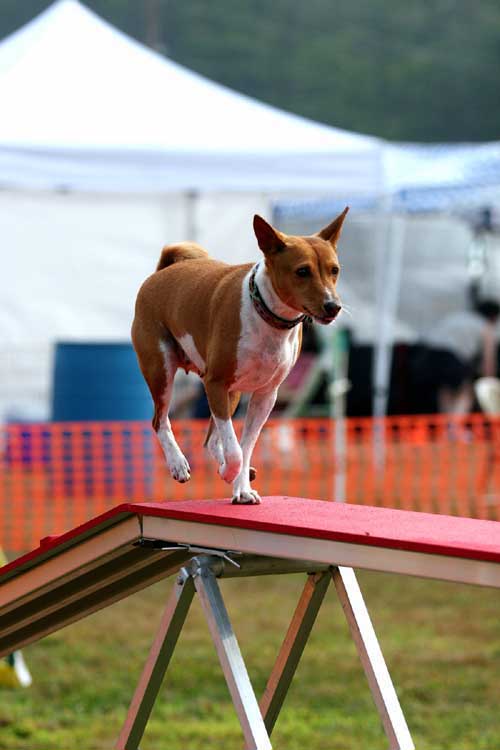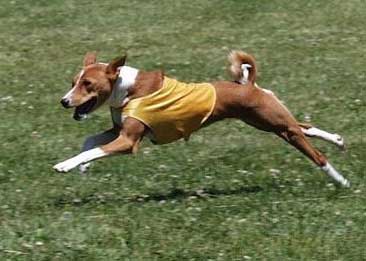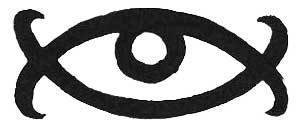Volume XIII, Issue 3, August 2009
Pages 10 & 11

To set up the question, my trainer and good friend always starts her classes on recall by saying when people ask her "How do you get you dogs to come when called?" she always responds by saying, "How do you get your dogs to leave?" The foundation of all of her classes is building a relationship with your dog so that it looks forward to training with you and enjoys being with you. What methods do you use to build your relationship with your dog(s)?
![]() Andrea Stone, CCS
Andrea Stone, CCS
University Canine Learning Academy
I love to use “capturing” and “shaping” as methods to build rapport and confidence in my dog/human relationships. Just silly fun things, like jumping through a hoop, sitting on a mat or targeting an object with a nose or paw.
“Capturing” is where I see my dog doing something and I “mark” that behavior (with a well charged clicker or marker word) and then reward my dog. I don’t necessarily lure or prompt my dog (though if it’s object targeting the novelty of the item usually works as a prompt) but just let him or her try things out and when there’s something I like I let them know. “Shaping” sort of takes capturing to the next level where you get a slightly more complicated behavior, but the idea is much the same. I just reward things the dog is doing and ignore others and thereby I slowly mold or “shape” an end behavior.
It’s so much fun and really the dogs can’t go wrong. It’s low stress for the dog and relaxing for the handler – I don’t really even do anything but click and toss out food rewards (or whatever your dog may like). The cool thing is that with a really creative dog you can end up with a behavior that is entirely different from the one you’d envisioned but that’s okay; some of the funniest things my dogs do they thought of all by themselves!
![]() Susan Kamen Marsicano
Susan Kamen Marsicano
“My dogs aren’t prone to looking to me for signals on what to do.”
Rose Marie Holt sent me that gem. She has it. Right there. In a nut shell. That will be our first job, to teach them to check in. This is hard, so we need not to get discouraged. An ”attention” class tries to do this, but it is, by it’s restrictive nature, not completely leaving the choice to the dog. It’s still a very good idea for each very young puppy to be enrolled in a class like that (class needs to use treats).
Sighthounds would not be prone to check in with people, as they are independent (of man) hunters. See Leslie Nelson’s DVD, “Really Reliable Recall,” for a 20 minute segment on getting your sighthound to check in. Our dogs all will check in, if WE learn some stuff. If we learn enough stuff, ideally, some dogs will give their people random reinforcement, for all that work. J AND, of course, to keep us working.
Essentially, I believe our dogs need to be encouraged to have complicated thinking patterns of their own. We can make their world wider. We can do some of that with lots of words, words, words. Talk to your puppies. Use a clicker, click and treat, randomly, when a pup looks at you, letting you know they got that word. There is a new study out about IQs of children by class. The children who are talked to the most, are also the children who receive the very least negative reinforcement, and they test to have the highest IQs.
Temple Grandin sighs deeply in “Animals in Translation,” about the lost freedom of our dogs to wander the neighborhood, know their ways around the world, on their own four feet, and then to return home at night. In our world, circa 2009, we need to create some degree of freedom for the dogs, giving them the choice to return home. Our fenced yards are good starting points.
Note that our dogs all need a good walk, on leash, every day. Just in from Chris Maxka, “You know, we are doing a lot of dog-walking these days, all around Seattle, at all the pretty parks and byways...and I never see another Basenji. People ooh and ahh and admire, but most have never seen one before. Come to think of it...you don't see many purebreds at all, except labs. Makes me wonder, where are all the AKC purebred dogs? Are they locked in crates? Do they ever get out of their back yards? Maybe we'd have more luck fighting the PETA people if our dogs were seen more often, and people could see how beautiful the purebreds are.”
The thing is to get them to come along because it is interesting, and THEIR choice, expecting some of the same you'd ask from a brilliant child. I have my really young puppies follow me around outdoors, off lead, in safe places, of course, reminding me of Kondrad Lorenz' goslings (he had to teach them to fly, but our sighthounds already know how to do that). They figure out I have treats right away, without me making an issue of it. I let them loose on fields to practice chasing plastic bags on the end of a lunge whip, and let them do lure coursing & racing practices, as early as feasible. Under 2 months is good. I take them along with me on agility courses, with the bars on the ground, and show them how to go through a hoop, (12" embroidery hoop) - all starting at about 5 weeks old, or younger, with them totally off lead. If they look at me, I randomly will say nothing and click and treat, or say something and click and treat. Then I will give a name to things. I point at my nose, Fern’s nose, saying, “nose, nose,” then do, “eye,” “eye,” “ear,” “ear,” etc. We do, “touch,” which can start as, “which fist holds a treat.” to a touch of a nose on a palm. The extends to “high five,” or, as I call it, Patty-cake.” Fern mixed this up, and she does her “Patty-cake,” if I touch my nose, which endlessly delights the “inmates” of the nursing home. Charlee Bears and a clicker in all pockets is a good idea.
Body language is something our dogs already understand. They can read ours as soon as they open their eyes. We need to learn that language, so we can talk it back to them with it. Try it! Turn your shoulder, as you turn, so you think you are exaggerating the movement, and see if your dog doesn’t turn that way, with you. Once we learn shaping, we can begin the pas de deux that is dog training.
![]() Sue Schulz
Sue Schulz
“What methods do you use to build your relationship with your dog(s)?”
I don't necessarily use a method - I believe the way in which I build relationships with my dogs is the same as how I build relationships with anyone in my life. There needs to be a chemistry, something that clicks, in order for the foundation of friendship, trust, happiness, and love to develop.
I know a dog is a dog and a person is a person; I see the difference, I get that. However, let's face it. For most of us dogs are part of the family. This does not mean dogs get a free ride. It means we owe them the time and effort needed to ensure they understand what that means to us. We need to make sure we are developing excellent communication with our dogs. Only when a dog truly knows what we want will he/she be able to give the desired action. The doors are now wide open for positive reactions from us and a flywheel of positive results begins, with the strengthening of the relationship being ensured.
My husband and I have a favorite saying, "Say what you mean and mean what you say". Staying true to this has helped us to have a most wonderful relationship. I apply this to my dogs as well. Trickery is not allowed. How many of you know of someone who says to their husband, "Go ahead and play golf all day with your friends. Really, I don't mind". Poor guy comes home to a week's worth of silence because his wife couldn't believe he actually went. She feels he should have known she wanted help with cleaning the basement that day. UGHH!! Not fair! Foul play! Relationship killer.
Apply the same to your dogs. Never say, "Bingo, come"! and after a beautiful recall take him into the house for the dreaded bath. Don't get upset when your dogs puts a hole in the couch after being stuck inside after 3 days of rain and you haven't given him/her a chance to exercise! You got it - Not fair! Foul play! Relationship killer. We can't expect one thing and have our actions or inactions communicating something totally different to your dog.
What do you do instead? Know that relationships are always changing and the effort should be in making them always stronger. Look at yourself and realize whenever people are involved mistakes and mishaps happen. The good thing is that most of our dogs are very forgiving and are more than willing to give you another try. Set goals with your dogs and celebrate big and small successes. Praise is great, but please don't forget the big prize. I love my job - I have been there for 16 years. I truly respect my CEO and Directors. But I have to be honest with you. The Thank You cards and kind words of recognition are very appreciated, but I would not go to work without that paycheck at the end of the week. Do not forget the big prize! The Jackpot! With my dogs that might mean playing with the squeaking foxtail, but a bigger prize is some chicken. They love the chicken. Got to have the chicken.
Relationships are built on mutual understandings, respect, a feeling of comfort, coziness and even just knowing you can make a mistake and the other one will forgive you. Clear, consistent communication is owed to your dogs so they can deliver to you the desired outcome. Ensuring excellent communication builds healthy relationships.
Oh yeah, remember - if you want your husband to help clean the basement, for goodness sake, just ask him!
![]() Bonnie Henderson MS, CPDT
Bonnie Henderson MS, CPDT
Looking back to the May Wrinkler, 2008 (Shawna retired from agility in June. Bonnie reported that Shawna was making her own courses, that, after all, it was time for her do what ever course she wanted, now that she’s almost 9)
MACH Shawna
I am so pleased to announce that Shawna earned her MACH agility title on March 23, 2008. Shawna has been a great teacher and wonderful teammate. Entering the competitive world of agility with a Rhodesian Ridgeback, I had all kinds of misconceptions. Shawna has taught me to look beyond my thoughts and really believe in her.
When we started, I quickly fell into the trap of thinking about Shawna in ways that would only serve to limit us. I joined forces with people who believe things like "sighthounds don't like repetition," or "you can't run a Ridgeback in the rain, heat, cold, wind, sun, etc." No one ever told me that she was a great agility dog, in fact, it was sometimes suggested that I get a different breed of dog, one better suited for agility. Fortunately I discovered that when you start thinking in such limiting ways, you cut yourself off from all of the possibilities, including the possibility of success.
Shawna loves agility. She is usually eager to play no matter what. Yes, we do have lots of environmental factors that make my job as trainer and handler more challenging. I needed to learn how to think outside of the box to instill that desire to play. What I learned was that Ridgebacks can learn how to tug and be silly, they can get QQs on 95 degree days, and can repeat the same drill 25 times as long as you use different highly valued re-inforcers.
Last weekend, I couldn't help but feel a strong wave of emotion wash over me when I left Shawna at the startline and saw her bright-eyed expression looking back, eagerly awaiting her cue to go. I was reminded of how far we have come and how very fortunate I am to have her as an agility partner. Titles aside, agility has been about our developing a relationship that is built on trust, respect, companionship and love. I will also remember to always dream big dreams.
Rio Voss 
